Baby Bed Bugs: What Do They Look Like?

No one wants to think about bed bugs – but like it or not, they’re a frustrating reality for renters and homeowners across the country (and around the world). Bed bugs are more than just a nuisance. They’re also considered a public health pest by agencies like the Centers for Disease Control and Prevention (CDC) and the Environmental Protection Agency (EPA). Thankfully, they’re not known to carry or transmit disease, but this doesn’t mean that they can’t cause real discomfort and distress.
The two best steps to keep bed bugs from invading your home are:
- Take proper preventive measures.
- Act right away when you notice signs of them.
To do this, you should familiarize yourself with the signs of an infestation, what bed bugs look like, how to find them, and the bed bug life cycle so you can get to them before they multiply.
It’s also helpful to know what baby bed bugs look like since this is an indication that the infestation is already underway and you’ll need to take action. We’ll walk you through all you need to know to protect yourself and your family from these sneaky pests.
What Do Baby Bed Bugs Look Like?
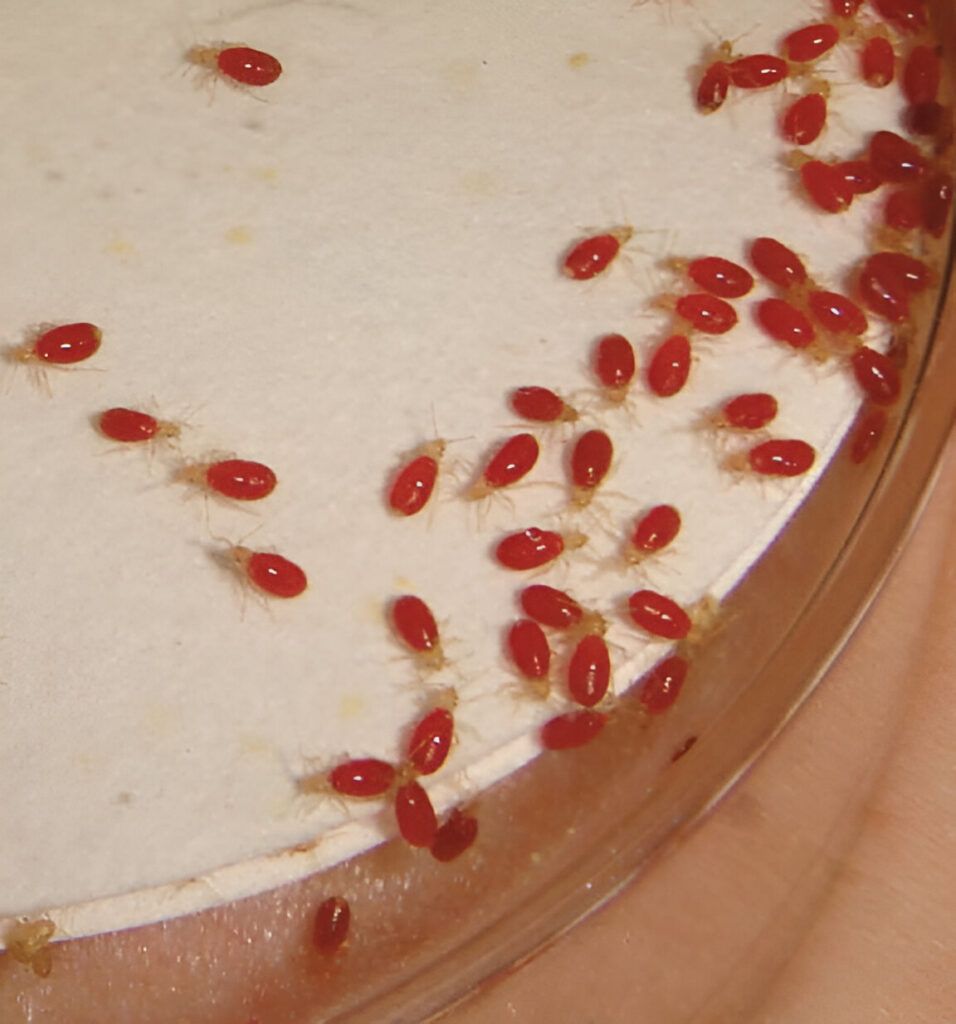
Courtesy of epa.gov
There are two main types of bed bugs in the U.S., Cimex lectularius and C. hemipterus. These bed bugs live all over the world and need to take blood meals from humans or other warm-blooded animals to survive.
Once you know how to properly recognize bed bugs and rule out other possibilities like fleas or lice, you can start eliminating them. However, identifying baby bed bugs can be hard because they can be as small as 1 mm. Even at their adult size, bed bugs are still only an average of 5 mm long, which is roughly the size of an apple seed.
Baby bed bugs (also referred to as “immature bed bugs” or nymphs) look more or less the same as their adult-sized counterparts. The bugs have an oval shape and flat bodies that extend into a small head. Adult bed bugs are more reddish-brown, while baby bed bugs are lighter in color and their bodies may appear translucent or whitish-yellow.
As they grow up, their bodies become darker but their appearance changes depending on what stage of development they’re in. For instance, in the first stages of development, the bed bug will be very small (around 1.5 mm) and very light-colored. However, all nymphs have somewhat transparent bodies and because they feed on blood, you can easily identify them because you can see the digested blood inside.
You can also see evidence of baby bed bugs because with each life stage they molt and you can see the discarded shells. The eggs of bed bugs are extremely small (about the size of a head of a pin) and are white and translucent in color so they can be very hard to detect by the naked eye.
Where Do Baby Bed Bugs Hide?
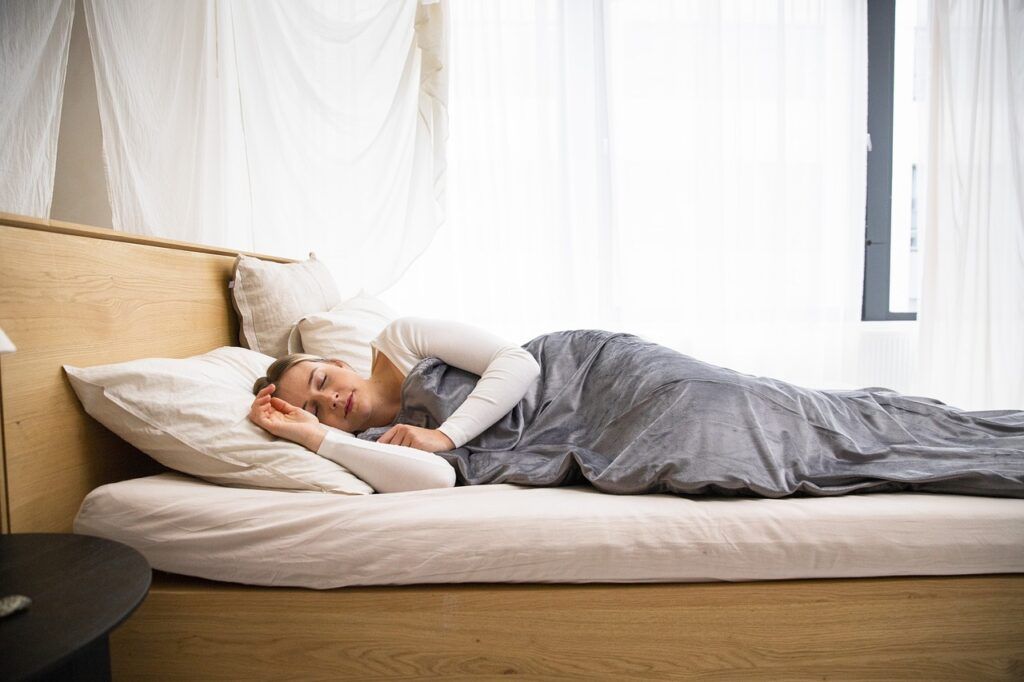
When not actively feeding on a host, bed bugs are very good at hiding, so you need to know where to look if you suspect you have an infestation. And though the name of this pest may suggest they’re only found in beds, they can actually hide in many different areas of your home.
An adult bed bug can travel 5 to 20 feet from its nest to the host and can therefore be found in the joints of drawers, in the seams of couches and chairs, under wallpaper, between the folds of curtains, near the seams and piping of mattresses, or in electrical appliances. Baby bed bugs will not be able to travel quite that far, but if you see evidence of adult bed bugs then you can assume that baby bed bugs are also present.
You may also find bed bug eggs – but because they’re so small, they’ll often go unnoticed by humans. Bed bug eggs are not laid on the host; rather, adult females will lay their eggs in a sheltered location where they’ll be protected. This is typically in places like the creases or corners of mattresses, or within the crevices of floorboards. Sometimes the eggs are laid singly, while other times they’re laid in groups.
Life Cycle of Bed Bugs
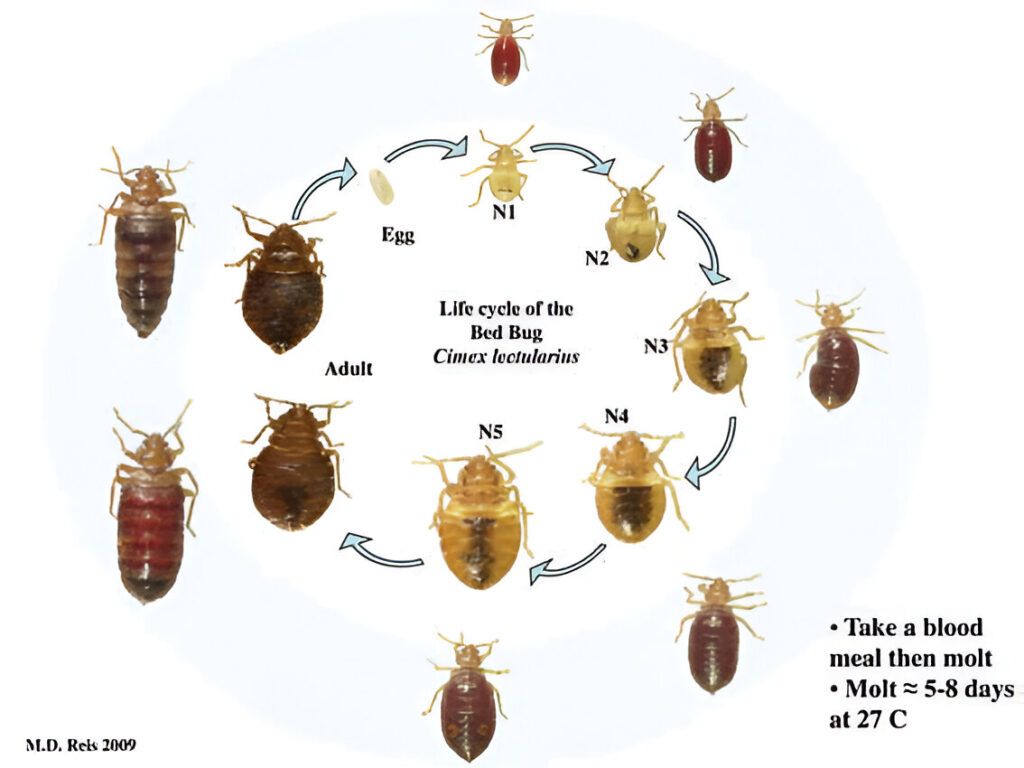
Courtesy of epa.gov
It’s helpful to know a little bit about the entire bed bug life cycle so you can distinguish between babies and adults. All bed bugs go through seven life stages and when they’re in development, this is referred to as the “instar” stages. There are five instar stages for a baby bed bug and one final stage where the bed bug is considered an adult. Bed bugs are in their nymph phase for approximately 37 days before they become an adult, and most will live an average of four to six months, though some can live for up to one year.
Eggs
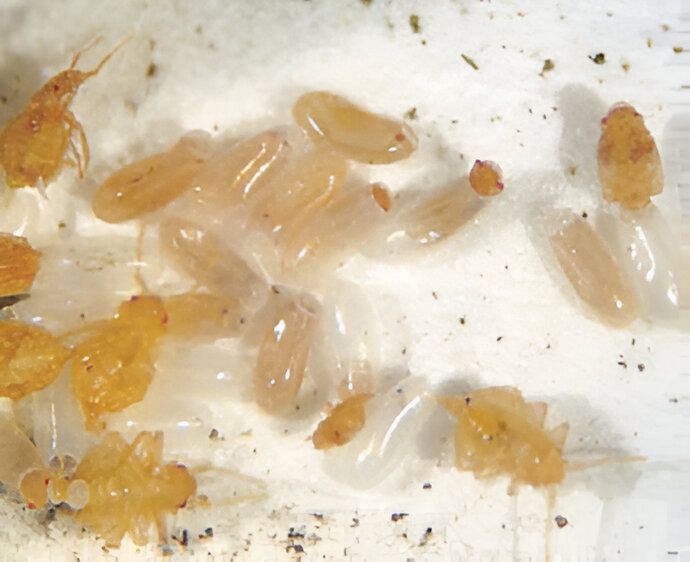
Courtesy of epa.gov
The first stage of a bed bug’s life is when they are still in the egg. These eggs are very small, less than 1mm in size, and often go undetected by humans. However, after about five days you can begin to see a dark eye through their whitish shell. An adult female bed bug will lay an average of five eggs per day as long as she has regular blood meals, coming to around 113 eggs laid in her lifetime. Most eggs hatch six to nine days after they’re laid, though in lower temperatures this will be longer. The majority of bed bug eggs survive, with an estimated 80% to 97% survival rate.
Five Instar Stages
If the conditions are optional (meaning around 70 degrees Fahrenheit) and the newly hatched bed bugs have access to a host and can take a blood meal, they will molt into their next instar stage within about five days. Each time a baby bed bug molts and moves on to the next instar stage, it will grow approximately .5 mm to 1mm in length.
In stage one, baby bed bugs will be about 1.5 mm in size, but still a whitish-tan color. In stage two, they will be roughly 2 mm long. In stage three they’ll be 2.5 mm, and in stage four they grow to 3 mm to 3.5 mm long. By stage five, the bed bugs will be around 4.5 mm long.
In order to move through each stage, the bed bug needs a blood meal since this is what allows them to grow and molt. If they cannot find this, then the instar stages will take longer, and if no meal is ever available it will cause the baby bed bug to die.
Adult bed bugs
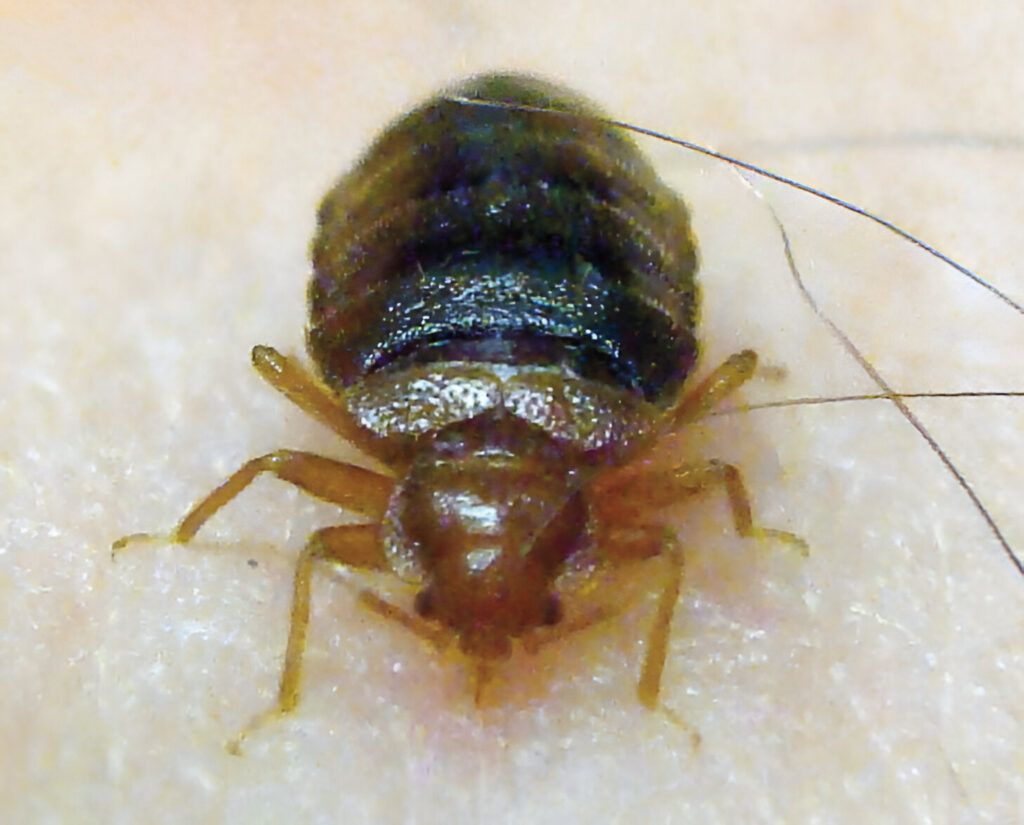
Courtesy of epa.gov
After the fifth instar stage is complete, the baby bed bug will molt into an adult. Adults can be 5 to 7 mm in length and can emit a musty and sweet odor. Female bed bugs are usually larger than male bed bugs, and adult females will continue to lay eggs every day as long as they’re getting at least one blood meal every 14 days or so.
Signs of Baby Bed Bugs

Whenever you notice signs of a bed bug infestation, you should act quickly so it doesn’t get worse. However, some of the initial signs may go unnoticed.
If you notice any of these signs, you should investigate further:
Bug bites on your skin that seemingly have no explanation: These bite marks will generally be red in color and raised. They may occur in patches, in a line, or in a random pattern. They are also very itchy for some people. On the other hand, some people are not allergic to bed bug bites and may not show any reaction until a week or two after they are bit, or sometimes not at all.
You can also see physical signs of bed bugs around your home including:
- Rust-colored stains on your bedding or mattress can happen if a bed bug is crushed and the blood inside stains the fabric
- Small, dark spots of bed bug excrement
- Eggs
- The shells of baby bed bugs molting
What To Do If You Find Baby Bed Bugs
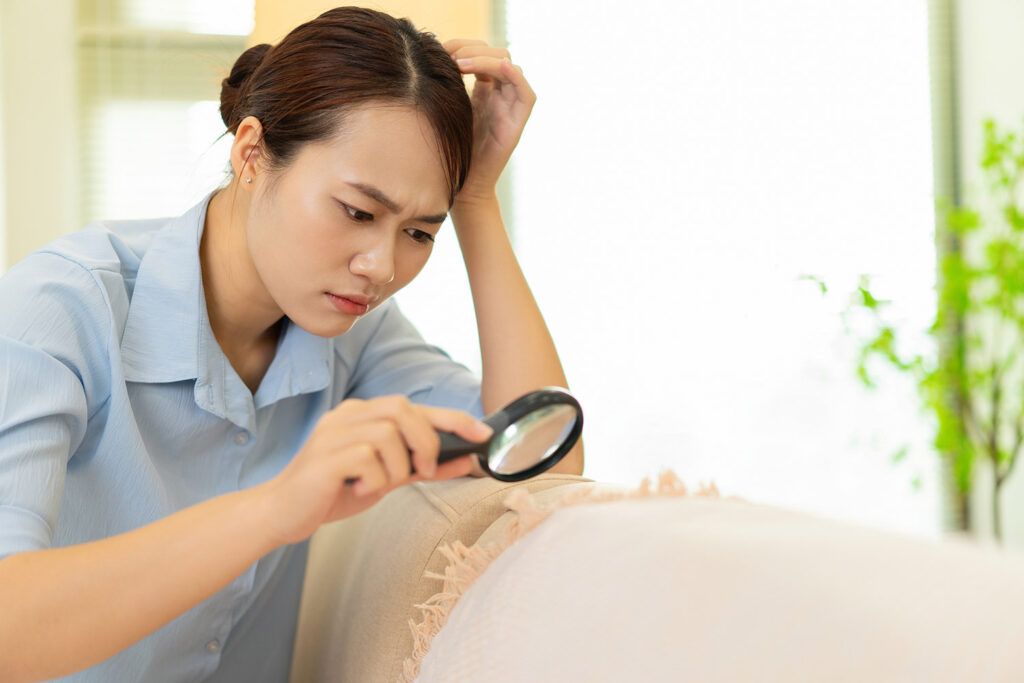
The best way to get rid of baby bed bugs is to act fast when you first notice signs of them. Start by following a few basic pest control tips such as vacuuming frequently, reducing clutter in your home so bugs don’t have places to hide, regularly washing your bedding (and using heat to dry them so it kills any bugs or eggs), and not storing anything under your bed if possible.
If you know you have bed bugs, there are a few options for getting rid of them. If you’re currently renting your home, in many cases landlords are responsible for bed bug infestations, so you may be able to turn to them for help. However, even though your landlord is on the hook for making sure your unit is livable and free from pests, it’s also your responsibility as the renter to keep the unit clean.
When advising on a bed bug infestation, the best pest control companies recommend taking an integrated pest management approach to really make sure you get rid of them. This typically involves using more than one method to kill them. Some of the more common methods involve using pesticides which can be applied either by the homeowner or by a professional, though it’s worth noting some bed bugs are resistant to pyrethrins, a commonly used pesticide. There are also non-chemical methods that have been proven effective such as heat treatment, cold treatment, or steam cleaning.
Whatever approach you use, make sure you research it thoroughly to ensure what you’re doing is a safe and effective form of pest control. If you have concerns about your ability to handle this on your own, you should contact a professional.
Are baby bed bugs visible?
Yes, baby bed bugs are visible, but they are quite small ranging from 1 mm to 4 mm in length.
Are baby bed bugs fast?
Baby bed bugs are much slower than adults and therefore will not travel as far and prefer to stay hidden unless they’re actively seeking a blood meal.
How small are baby bed bugs?
After a baby bed bug has hatched it will only be around 1 mm to 1.5 mm long. Older baby bed bugs will grow to around 4.5 mm long before they molt into adults.
Are baby bed bugs hard?
No. The shell of a baby bed bug is very soft and it can easily be killed by squishing it.
Can baby bed bugs bite?
Yes, all bed bugs can bite and this is how they feed to get their blood meal.
Can baby bed bugs fly?
No, neither baby bed bugs nor adult bed bugs can fly because they do not have wings.